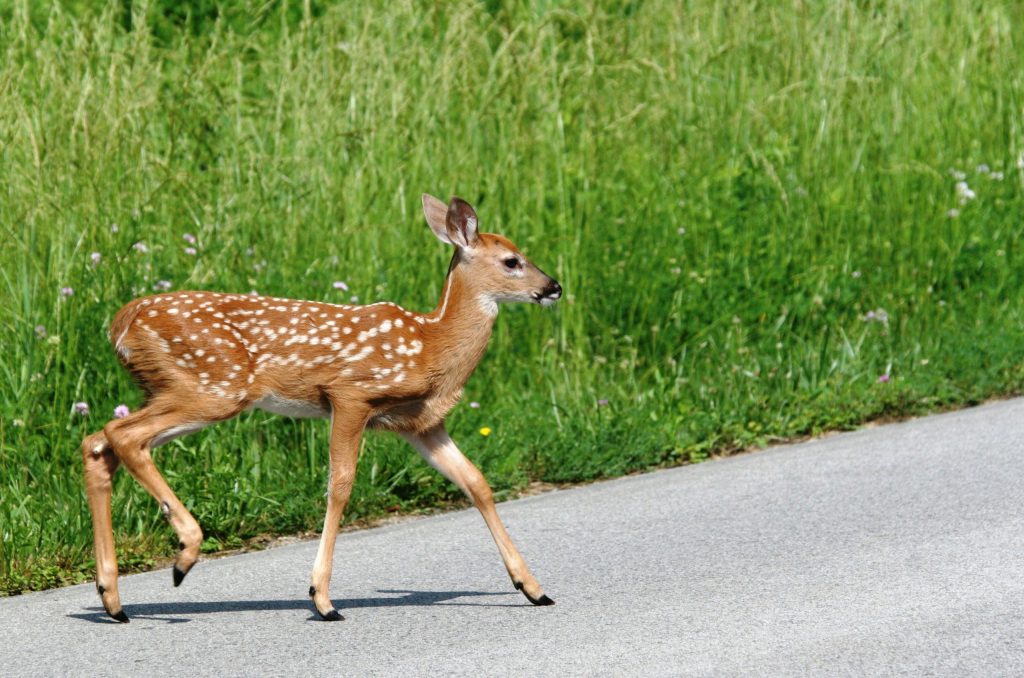We discussed previously how and when deer disperse. But biologists (and scientists) are always more interested in the WHY.
It may be the start of summer vacation but we are going back to school for a few minutes. Today’s topic is vocabulary. Defining some terms ensures we are all talking about the same thing.
Term #1: Ultimate cause. Ultimate means the origin or the original source of something. An ultimate cause is one you can trace back to the beginning: the first event in a chain. The Ultimate cause for dispersal may be that dispersal is a way to minimize inbreeding and/or leads to more mates.
That makes perfect sense. In contemplating his future as an adult, a yearling buck considers these ultimate causes and makes a decision to disperse to a new range.
NOT!
No one believes deer are thinking, “You know, I have way too many sisters, aunts, cousins, half-sisters, great-aunts, and second cousins around here. It’s going to be pretty awkward come fall and I don’t want my kids having an extra leg or a third eye.”
Term #2: Proximate cause. Proximate means close to in time or space. A proximate cause is one this is close in time or sequence to the thing it is causing. Think of it as the trigger. Some sort of cue that reinforces the ultimate cause!

In the case of deer dispersal, the proximate cause may be when an adult female is ready to give birth she may behave differently towards her male yearling triggering the dispersal behavior. So this proximate cause (female aggression) is the mechanism by which inbreeding (the Ultimate cause) is reduced.
Yikes! What happened to summer vacation?
Deer aren’t thinking about inbreeding, but simply responding to their mother’s behavior and ultimately (get it? Ultimate cause!) pass on more of their genes!
By the same token, interactions among males (imagine two antlered males sparring) would be a Proximate cause for a male to disperse to find an area with less competition for mates. Or maybe the “competition” doesn’t have to be actual sparring but simply the number of rubs and scrapes in an area.
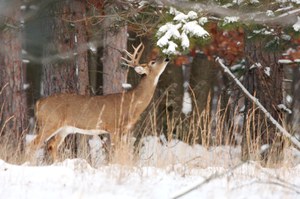
Both are neat stories, but how do you test those ideas? This is where the HOW and WHEN help answer the WHY.
If dispersal is caused by mom forcing her son to disperse, then orphaned males would be less likely to disperse. So if we increased harvest rates on antlerless deer, we should create more orphaned males in the population. More orphaned males = lower dispersal rates in spring.
If dispersal is caused by male-male competition, then more older males in the population = higher dispersal rates in early autumn (when the rut behavior starts).
Implementation of antler point restrictions (APRs) and the increased antlerless harvests initiated in 2002 provided an experiment for these ideas.
• Increased antlerless harvest should have resulted in more male orphans (1-year-old males) so we should expect reduced spring dispersal.
• APRs should have resulted in more, older antlered males in the population so we should see more male-male competition and greater autumn dispersal.
So what happened!?! (I know you are on the edge of your seat)
In 2002, this is what dispersal looked like (see graph below). About half of the dispersing males took off in spring (Week 16 is about 1 May) and the other half left in fall (Week 40 is about 1 October).
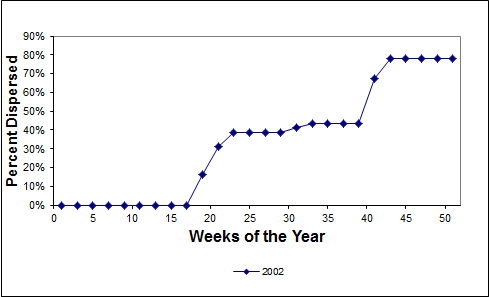
After one year of APRs and increased antlerless harvest, look what happened. One-third dispersed in spring and two-thirds dispersed in fall. Fewer dispersals in spring (more orphaned males) but more dispersals in fall (more male-male competition)!
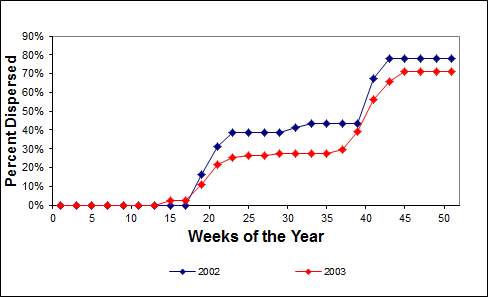
After 2 years of APRs and increased antlerless harvests the pattern is even stronger. Only 25% dispersed in spring but 75% dispersed in fall!
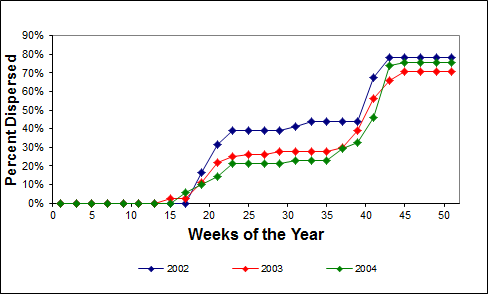
So our tests of these predictions based on our theory of the ultimate and proximate causes for dispersal behavior fit our observations. We haven’t proven anything but we’ve provided more evidence and support to the theory.
This is how Science works. We generate a theory (like the Theory of Evolution), which has testable predictions. We conduct an experiment to see if the predictions hold. If they hold, we can keep using that theory as the basis for further scientific exploration. If not, we either fix it or trash it and find a new one.
Given our observations, we keep the Theory of Evolution as it has allowed us to study and understand the behavior of dispersal in white-tailed deer.
-Duane Diefenbach and Jeannine Fleegle
Previous post on this topic: Male Dispersal: Maybe they do ask for directions?
Next post on this topic: Female Dispersal? Really.
Photo credits: PGC
If you would like to receive email alerts of new blog posts, subscribe here.
And Follow us on Twitter @WTDresearch
